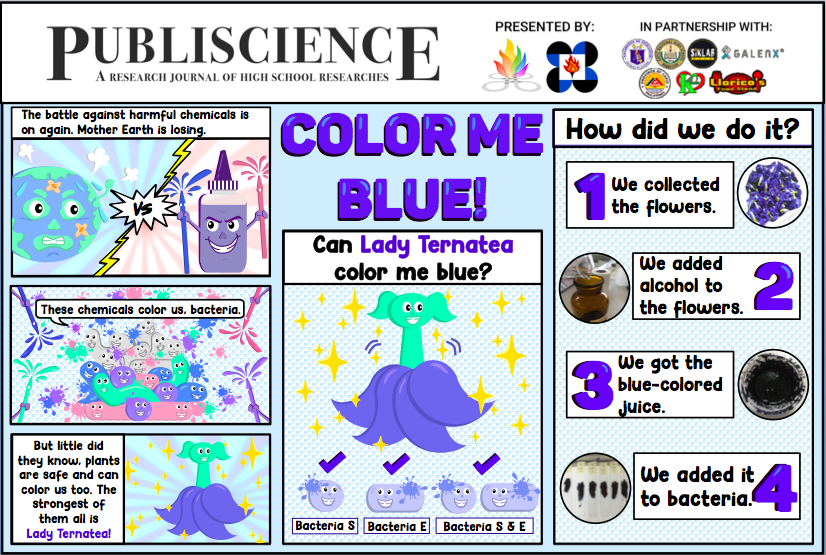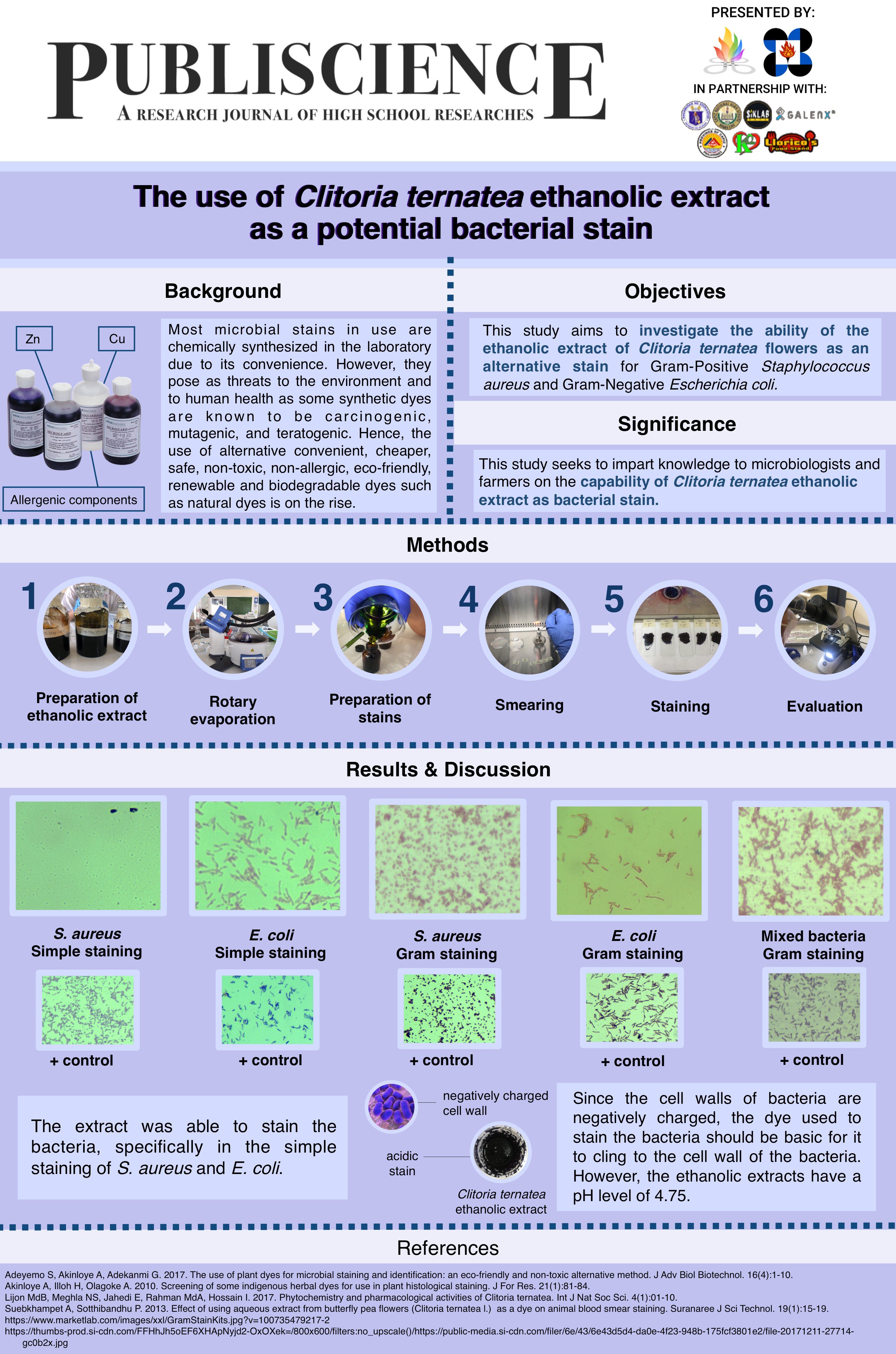The use of Clitoria ternatea (blue ternate) ethanolic extract as a potential stain for bacteria
CHERIL B. TRIOL, ATHENA THERESE V. DIONELA, ANGELA ISABELLE D. ECUBE, and CATHERINE JOY A. MEDIODIA
Philippine Science High School – Western Visayas Campus, Brgy. Bito-on, Jaro, Iloilo City 5000, Department of Science and Technology, Philippines
Abstract
Most synthetic microbial stains are pollutants that pose carcinogenic, mutagenic and teratogenic health risks. Thus, this study aimed to investigate the ability of Clitoria ternatea ethanolic extract as a potential stain for bacteria. The extract was utilized in the simple staining and Gram staining of Staphylococcus aureus, Escherichia coli, and mixture of the two. The properties of the stain such as presence of anthocyanin, pH level, color, and solubility of the extract were determined. The staining ability of the extract, in terms of visibility of cell walls and color intensity, was determined through frequency count that showed that majority of the replicates had defined cell walls with incomplete uptake of stain in simple staining and Gram staining. Clitoria ternatea ethanolic extract has the potential to impart stain on Staphylococcus aureus and Escherichia coli bacteria through simple staining and Gram staining; however, due to the incomplete uptake of stain by the bacteria, it cannot be considered as an alternative to commonly-used bacterial stains. Hence, the researchers recommend the development of a new staining technique for the potential stain.
Keywords: Clitoria ternatea, dyes, stain, anthocyanin, ethanolic extract


